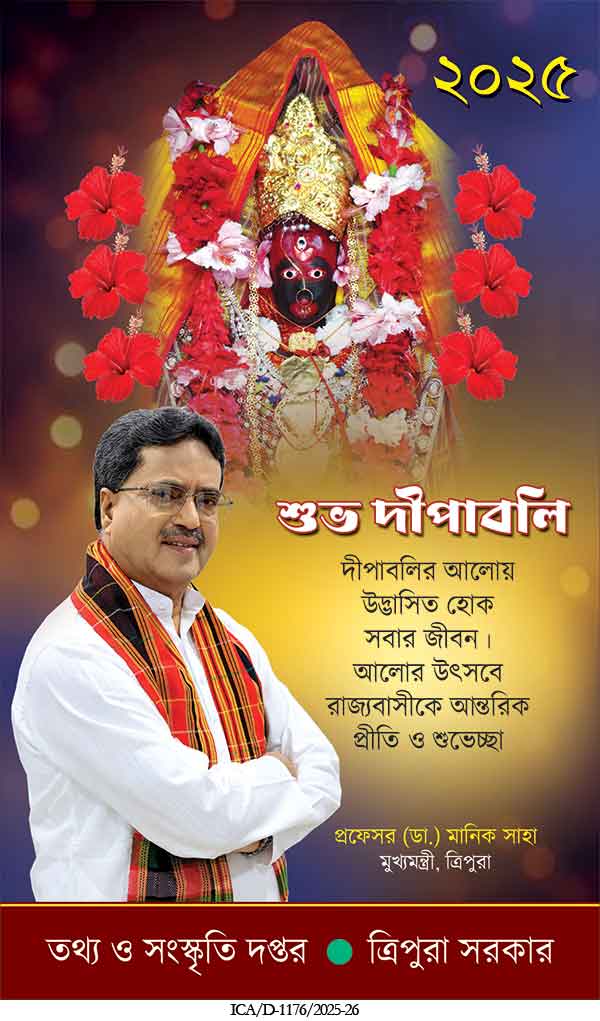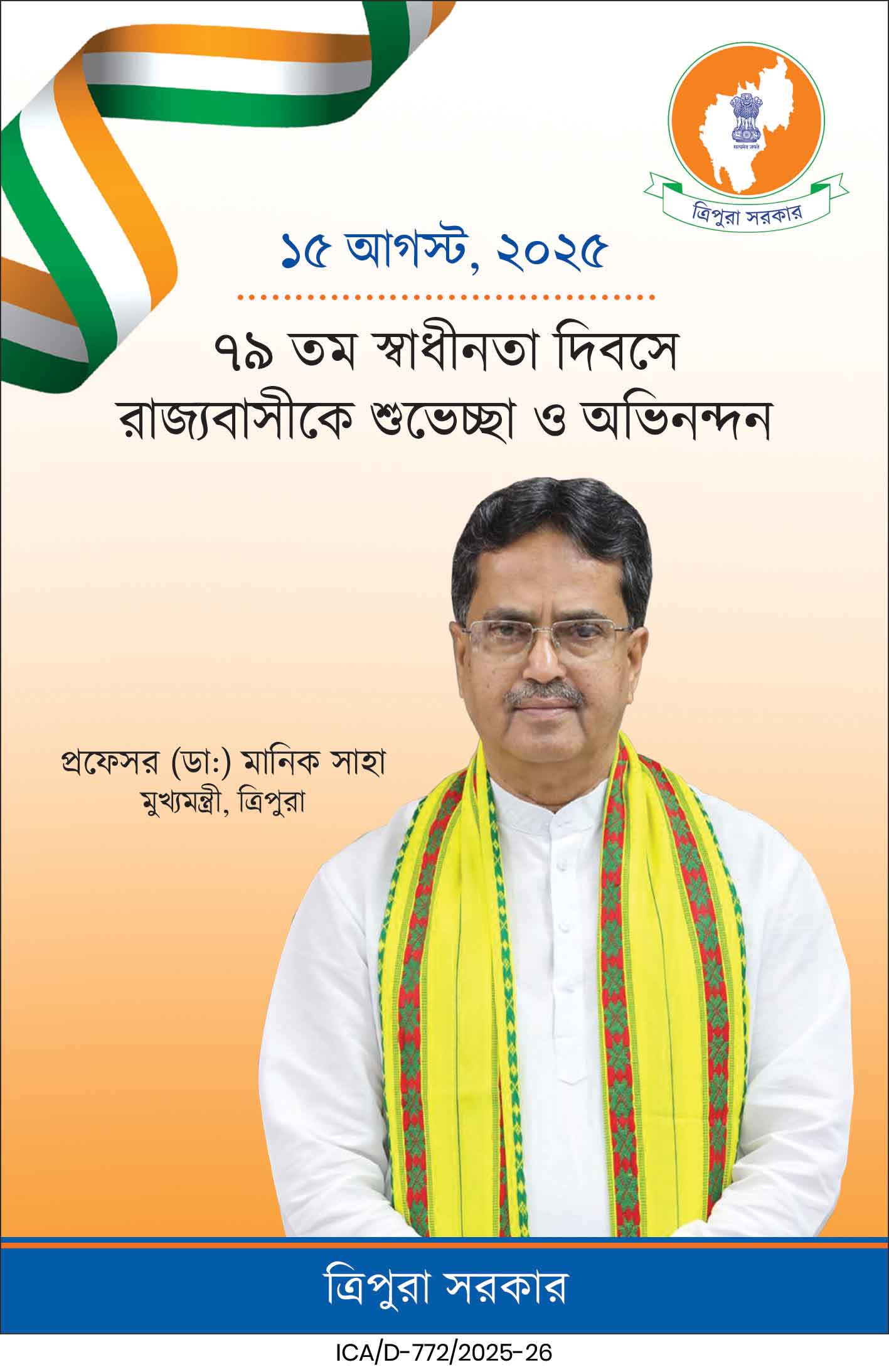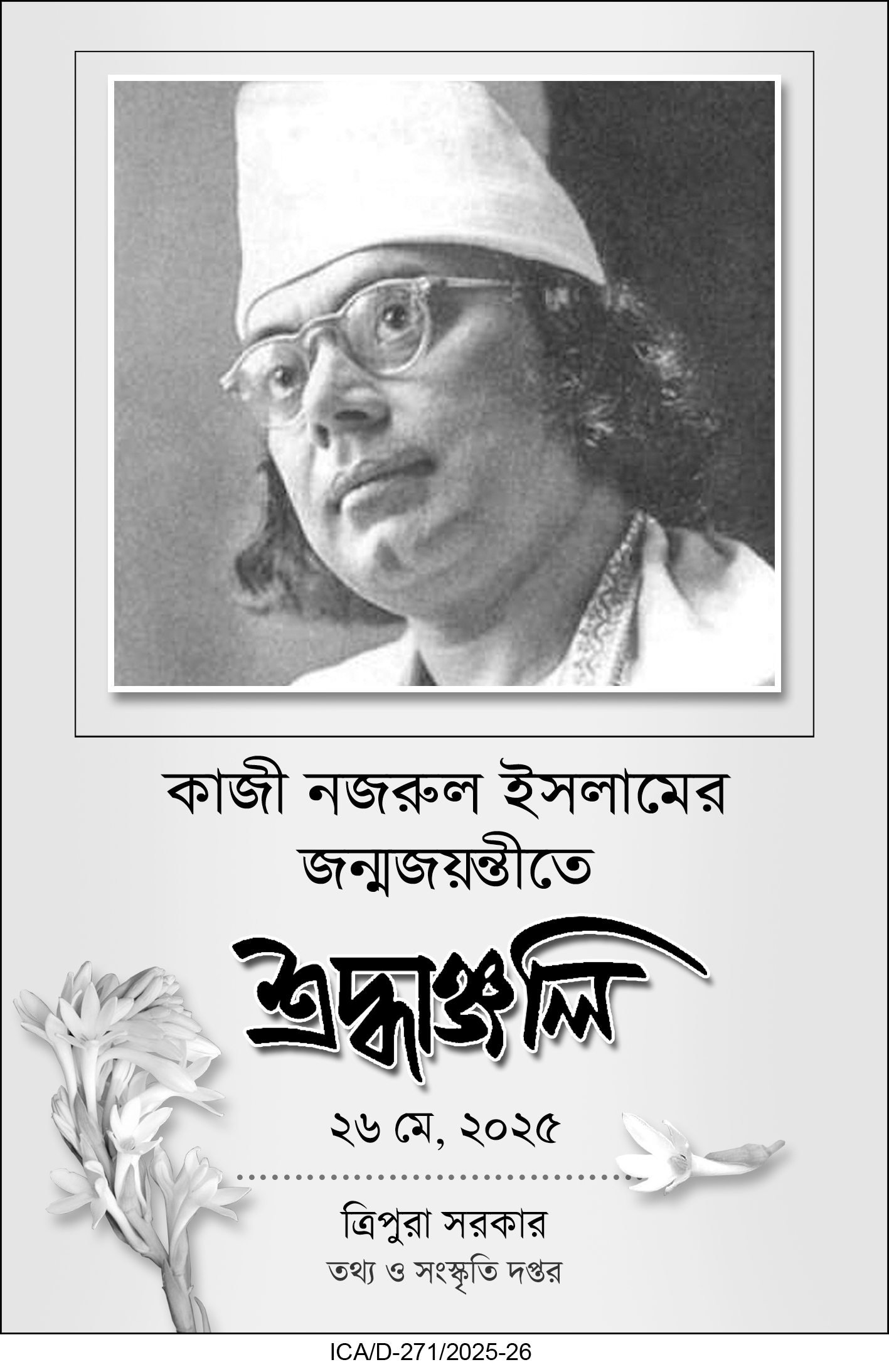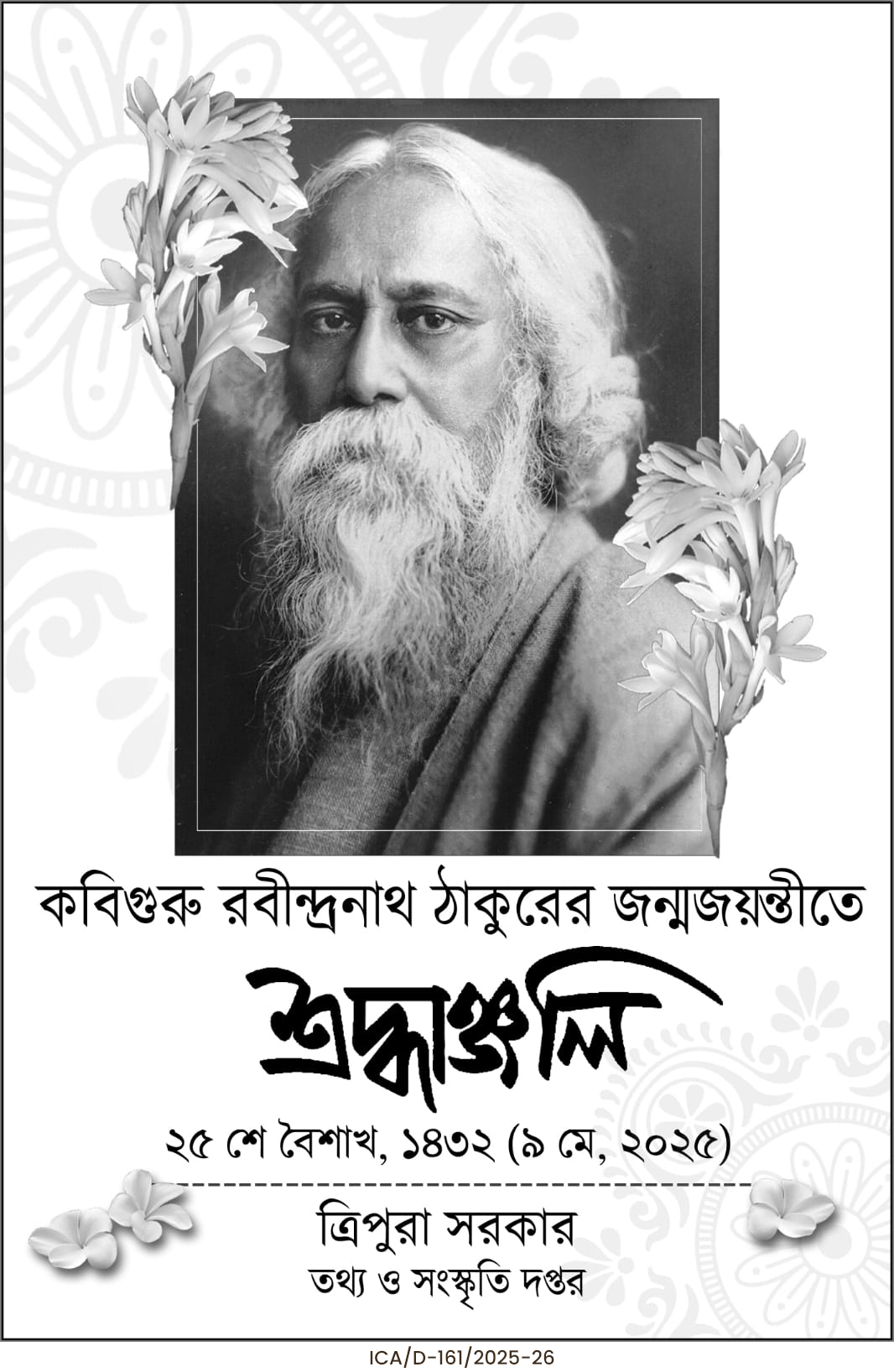The State of Tripura turns 50 years old this January. January 2 1 , 1 972, was a historic moment for the people of the state as Tripura attained the status of a full – fledged state that day . In fact the transformation from a monarch started with the si gning of Merger Agreement by the Queen Kanchanprabha Debi on S eptember 9, 1 949. The period preceding and following was equally eventful, with a lot of aspiration, struggle and decisions involved.
For Tripura s tanding at the crossroad , with 50 years since gaining complete Constitutional benefits (in 1 972) and with development indicators for next 25 years, development might have different meanings for different strata of the society. In another perspective also G S DP, indicators, particular rank in various indices, growth rate, all these are too mathematical or statis tical , whereas development in general is subj ective to a great extent. For the common people the latter is more relevant than the former. A veteran may like to still cherish at the bygone era of monarchical luxuries, customs or the tradit ional values at their best. On the contrary, a youth of 2 1 st century might prioritise the modern infrastructure, digital revolution and virtual world with less concern for Garia, Gaj an, Ker, loin loom, j huming, embellishing oneself with traditional costumes, or enj oying t he lullabies of the el ders.
In Retrospection:
Political evolution apart, a common man today misses out on the days o f go ing to the market with 1 0 rupees or even less, the barter system, the intimacy in social bonding, the frank neighbourhood when the young ones were happy to roam around with the grazing cattle, or jumping into the river with fellow children and not with cartoon shows on television . Socialisation meant nothing but face – to – face interaction even some 1 0 – 1 5 years ago . Summer days were comfortable even without air – conditioner, as the family members used to relish at the cool breeze on the tong ghar or the courtyard in the lazy evening. Nobody had to worry about getting an organic produce at higher p rice, as almost everything was organic . Pollution related issues and loss of bio – diversity were no t priority topics of discussion. What we are trying to emphasise today was a routine part of daily life. Such a beautiful time existed in a nascent state Trip ura, despite the lacking of modern sophistication and convenience.
The changes have come not just in the administrative set – up, but in economic, social, and rel igiou s life. Alo ng the evo lutionary j ourney from monarchy to democracy we had to accustom ourselves with the changing lifestyle. Base of our economy has always been a iculture and this sector has been overwhelmed with transformation in various aspects. First of all the aboriginal people of Tripura had to be weaned off jhum system of cultivation gradually. The system, although persists till today, is at minimal level. With the expansion of education many of them have given up agriculture (j hum particularly), or have fo und different vocations to sustain themselves. This apart, the system of settled agriculture has undergone massive transformation. Proportionate with the increasing population emphasis has been on increase in production, introduction of new varieties and new technologies. The government has begun to play a significant role in the lives of farmers with lot of inputs in terms finance and te chnic al knowhow outreac h pro gramme s. In the recent p ast PM Kisan Samman Nidhi, PM Fasal Bima Yoj ana, Mukhyamantri Fasal Bima Yoj ana etc. have been launched to provide a shield against natural vagaries, and situational hurdles in the farmers’ life .
Today’s life is more of comfort, may be at the cost of substance. With the extended road network, rail network, air connectivity, people have got use d to a convenient life. With door-to-door drinking water supply, surplus power generation, credit link and market facilities, economic activities have gained a new dimension. Commercial relations are now faster and far wider. Industrial growth is easier with the coming of Single Window system and farmers are having greater outreach with Kisan Rail and government support for export. Pineapple, j ackfruits of Tripura are now being served on foreign platter. The wave of urbanisation is now going beyond cities more with the slo gan and pro gramme of Digital India. People in rural areas are getting the benefits of online transactions and service delivery through Common Service Centres. IT and tourism are the two new and popular entities in industrial sectors.
Social sector is equally a priority are a fo r the government, although there is more room to p lay, as social issues are very subj e ctive . When the number of social securi ty schemes went on increasing, women are far empowered with the rising economic self-reliance to which concept of SHG has made an apparent difference, whether the society itself needs to be changed more is a question to debate on. Let the social scientists and civil societies have a say on it vis-a-vis our traditions and norms. Today quacks seem to be losing their job and the health care system is getting stronger day by day. Even few years back setting up of Oxygen plant was not a priority in this sector, but ironically COVID – 19 has made a p lac e for it in the state.
Culture is another subjective topic where critics always get a chance to p lay their role. As Tripura has taken pride in its composite culture, of late the cultural ambience has taken a new turn. The list of festivals with universal appeal is getting longer, with the kind of fervour Christmas, Ganesh Festival, Diwali Mela etc. occasions started generating. On the one hand we are adapting to alien cultural segments, on the other hand efforts are on to preserve our heritage. Vernacular languages, festivals, costumes etc. are being preserved and promoted at the official level now. Tribal Research Institute and the Directorate of Kokborok and Other Minority Languages are just part of such an attempt.
Journey ahead – what to look for?
Session of self-retrospection may continue for pages. So, it is better to look forward, by applying the lesson of the past, the resource of the present. Recently the state government has tried to a leap forward by setting a 25-year goal. With such an objective it is coming up with a blueprint of development strategy for the next 25 years.
Basically we have to work on with emphasis for ensuring overall development and a better future for the people of the state. Primary sector has always been at the forefront of policy making, so no exception this time, as agriculture and allied activities contribute about 3 0 per cent to GSDP (20 1 9 – 20) of the state. Welfare activities in the field of education, health, nutrition, welfare of disadvantaged sections etc. must continue to have the process of development going. We may hope that the recently launched two schemes namely Mission 1 00-Vidyajyoti and Mukhyamantri Tripura Gram Samriddhi Yoj ana will play a significant role in this direction. We also need to do a lot in the field of cleanliness, climate change, industrial growth, connectivity and make use of the prevailing and upcoming infrastructure like SEZ at Sabroom etc.
Cutting long story short, let us hope for a better tomorrow. Despite the surging COVID cases, despite all the loopholes in the society, we can nothing but pledge to act at our best to face the challenges ahead in an organis ed and unite d manner.
(A special feature on Statehood Day from ICA Department, Govt of Tripura)





